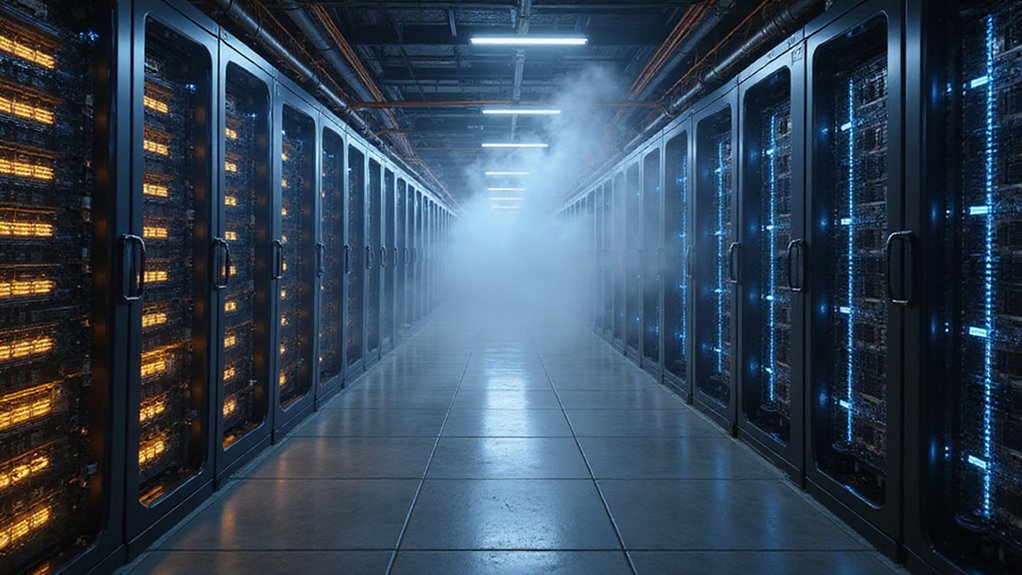Few technological revolutions have demanded such staggering capital commitments as the concurrent rise of artificial intelligence and cryptocurrency infrastructure, yet the sheer magnitude of investment flowing into these sectors—over $320 billion in AI alone for 2025, up from $246 billion the previous year—suggests either unprecedented foresight or spectacular overconfidence.
The arithmetic is sobering: electricity consumption from data centers, AI operations, and cryptocurrency mining is expected to double by 2026, while global grid infrastructure spending must leap from $400 billion in 2024 to $600 billion annually by 2030. One might wonder if investors have adequately considered the physics of their ambitions—after all, computational power remains stubbornly tethered to electrical grids and thermal management, regardless of venture capital enthusiasm.
Tech giants Amazon, Microsoft, Google, and Meta are collectively wagering that generative AI infrastructure (absorbing over $90 billion between 2024 and 2025) will justify these extraordinary outlays. Their bet hinges on AI’s projected $15 trillion contribution to global GDP by 2030—a figure that would make this infrastructure gamble appear prescient rather than profligate. Microsoft’s existing AI ventures already generate $13 billion annual revenue, demonstrating that substantial returns are beginning to materialize from these massive infrastructure investments.
The $90 billion question: will AI’s promised $15 trillion GDP windfall justify today’s unprecedented infrastructure wagers?
The strategic pivot toward industry-specific AI solutions reflects growing recognition that generalized applications may not generate sufficient returns to service these capital commitments. Companies are discovering that competitive advantage increasingly depends on computational capacity rather than algorithmic cleverness—a realization that transforms data centers from mere infrastructure into strategic assets. Meanwhile, the emergence of AI agents capable of executing entire workflows autonomously promises to revolutionize enterprise operations beyond current SaaS limitations.
Yet challenges multiply as rapidly as investments. The rapidity of AI model evolution threatens to render physical infrastructure obsolete before depreciation schedules conclude—a particularly uncomfortable prospect for CFOs contemplating multi-billion-dollar commitments. Limited expertise in AI infrastructure development compounds these risks, creating bottlenecks that capital alone cannot resolve. The cybersecurity threats targeting these high-value installations continue to evolve, with state-sponsored attacks and AI-enhanced intrusions creating new vulnerabilities that traditional security measures struggle to address.
The sustainability imperative adds another layer of complexity, as environmental regulations and social responsibility requirements increasingly constrain operational flexibility. Data center providers must now balance computational performance with community engagement and environmental stewardship—a delicate equilibrium that previous technology buildouts rarely confronted.
Whether this infrastructure gamble represents visionary investment or speculative excess will largely depend on whether the promised economic dividends materialize before the next technological paradigm shift renders today’s cutting-edge facilities tomorrow’s expensive monuments to misplaced confidence.






